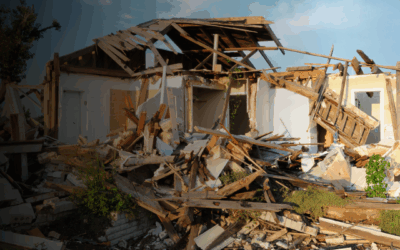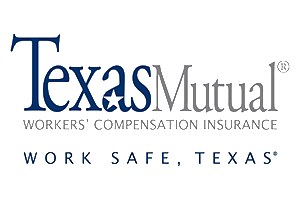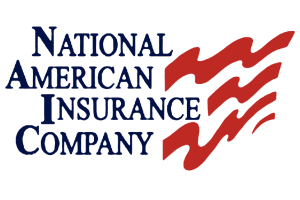How to Make Sure You’re Prepared & Protected for Hail Season

How to Make Sure You’re Prepared & Protected for Hail Season
Did you know that, according to the National Oceanic and Atmospheric Administration, a seven-day forecast can accurately predict the weather about 80% of the time and a five-day forecast can accurately predict the weather approximately 90% of the time? However, a 10-day—or longer—forecast is only right about half the time. That means that, at best, there’s still a 10% chance that the weather can change on you last minute and, at worst, you have a 50/50 chance of preparing for weather 10 days out. This creates truly unforeseen circumstances for everyone, and, especially as a native Texan, I know this reality all too well.
I’m not just referring to the “ice-mageddon” of February 2021, now commonly referred to the 2021 “Texas Power Crisis” or the “2021 Valentine Storm.” I’m talking about what most Texans experience at least a few times a year- hail.
We know the damage that hail can cause, but how do these frozen spheres of destruction even form in the first place? Per National Geographic, “Hail is formed when drops of water freeze together in the cold upper regions of thunderstorm clouds.” Hail can range from anywhere between 5 millimeters (less than the width of a pencil), to 47.6 centimeters (about the size of a soccer ball). In addition, a normal cloud can form into a thunderstorm cloud in as little as 30 minutes.
In the same way two forces come together to form a thunderstorm, warm air rising into cold air, hail and time (or lack thereof) come together to form a recipe for disaster. The result is an average of $8 billion to $14 billion a year in hail-related insured losses between the years 2000-2019. In 2020, Texas topped the list of most hail claims paid for both auto and home insurance, totaling $474.6 million in losses.
As a matter of fact, Texas not only ranked as the number one state for hail loss claims from 2017-2019, but in 2021 alone, Texas experienced 688 major hail events. That’s over twice as much as the second state on the list, Kansas, with 303 major hail events. Everything’s bigger in Texas, including the hail and the amount of insurance claims that come with it. We’re known to be very prideful as Texans, but a hailstorm can humble us real quick. So, it’s important that we Texans, along with every other state, are both prepared and protected before a thunderstorm cloud even begins to form and decides to unleash hail on us.
Hail Preparation Checklist
Take a few moments to review the checklist below to assure that you’re as prepared as possible for the next hailstorm. As the old saying goes, expect the worse or unexpected, and hope for the best.
- Does your current insurance policy cover hail damage to both your auto and home?
- If you’re unsure or would like to know where the gaps in your coverage are, please reach out to a Tower Street Agent today. We would love the opportunity to go over your current coverage with you and provide you with a gap analysis, completely free of charge.

- Put together an emergency kit and be sure it’s in a convenient location.
- Be sure to keep reading to see our suggestions below for an emergency kit. You’ll want to make sure this kit is in a place that’s easy to get to but also out of reach of children. It’s also not a bad idea to revisit this process every six months to see if anything needs to be refreshed in your emergency kit.
-
Move vehicles to a covered location or get a hail cover for your vehicle(s) if needed.
- Most hail damage to vehicles is cosmetic, but you can guarantee that if your vehicle experiences hail damage, so did plenty of others in your area. This can lead to longer wait times to have your vehicle repaired. The best way to avoid this, of course, is to have a plan for where you’re going to move your vehicles in the event of a hailstorm. Maybe you’re like me and my family and it becomes real life Tetris trying to fit all of your vehicles, leaving MAYBE an inch between your truck and the garage door. Or perhaps you have one too many vehicles that can fit in the covered parking you have available to you. In that case, I would strongly suggest you invest in a hail protector for your vehicle, such as this one from Hail Protector.
-
Can your roof endure a hailstorm?
- If you haven’t had your roof inspected recently, now would certainly be the time to have that done. Roofs experience various wear and tear over time but you don’t want to be in the middle of a hailstorm to find out that your roof wasn’t in the best condition. This can lead to further damages to your home besides just a roof replacement.
-
Do you have any trees or landscaping that needs trimming?
- Even a thunderstorm without hail can cause branches and landscape to break but having them trimmed will help prevent some damage that may occur. By trimming the branches, you lessen the point of tension where a branch is likely to break and thus preventing that branch from breaking a window, damaging your roof, etc.
-
Move any outdoor furniture or items that may get damaged. Anchor the ones that cannot be moved.
- Moving any patio furniture you may have to a covered area is a must, especially any sort of glass tables. In addition, if you have larger items in your backyard such as a playground or a trampoline, be sure that they’re anchored as hailstorms and thunderstorms can have high winds. While these winds may not be strong enough to blow these items into your neighbor’s yard, they may be strong enough to knock them over, causing damage to your fence, house, or anything else in its near vicinity.
-
Make sure all necessary electronic devices are charged and have backup chargers on hand.
- Hailstorms are known to cause power outages that can last anywhere from mere seconds to days. Most importantly, you need your phones to be charged in case you need to call 911 and to be able to check the weather to know if the storm has run its course. It also doesn’t hurt to have a backup source of entertainment if needed for your kids to keep them happy and to keep you from losing your sanity.

HOW TO MAKE A WEATHER EMERGENCY KIT
As a husband and a father, I want to be sure my family is both as protected and prepared as possible in the case of any emergency. While this kit was strongly inspired by the recommended kit on ready.gov, I’ve also thrown in a couple of my own tips and tricks. Of course, this kit covers most needs for most types of disasters, beyond just a hailstorm, because I want my family to be the one that can lend help to others in a disaster situation rather than the relying on help from someone else. This list is separated into basic and additional supplies, but please do not view this as the all-encompassing emergency kit if you check all the boxes. Evaluate your family’s unique needs and amend this checklist accordingly.
Basic Items for Your Weather or Disaster Emergency Kit
-
Water
- Read.gov recommends one gallon / per person / per day for several days, for drinking and sanitation. Depending on your family’s situation you may want to store these as gallon jugs or cases of water bottles. With small children, cases of water bottles might be better since they can more easily hold and drink out of a water bottle as opposed to a gallon jug.
-
Food
- This is one of the trickier parts to your kit because depending on when you make your kit and when you need it could be the difference in how much food you have and for how long. The key here is for it to be non-perishable food, and to have enough for several days as well.
-
Battery-powered or hand crank radio and a NOAA Weather Radio with tone alert
- In the event your phones are not able to work, radios are your next best option. Having the NOAA Weather Radio with tone alert allows you know when more dangerous weather might be headed your way so you can take the necessary actions to keep you and your family safe.
-
Flashlight, an additional one that is hand crake wouldn’t hurt either
-
First aid kit
-
Extra batteries and power banks
-
Whistles
- One for each member of the family to be able to signal for help
-
Dust mask
- To help filter contaminated air
-
Plastic sheeting and duct tape
- This is to be able to build a shelter-in-place in the event that no other shelter can be provided. I would strongly suggest you take five minutes to educate yourself on how to create said shelter as well by reading this article from TruePrepper.
-
Moist towelettes, garbage bags and plastic ties
- For personal sanitation…- I’ll let you figure this one out
-
Wrench or pliers
- To be able to turn off any utilities that may be causing further damage in your given situation
-
Can opener
- For food, hand cranked is a must on this one, you don’t want to be wasting batteries.
-
Local maps
- Remember before the days of the smartphone and GPS, when you would have to pick up a map in the hotel lobby while out of town on vacation to know where you were, where you were going, and how to get there? Well in a disaster that may render your smartphone to a $1,000+ hammer. It’s time to go back to 1999 and get your maps out. Just make sure the maps you’re storing in your kit are current.
Additional Supplies for Your Weather or Disaster Emergency Weather Kit
-
Both prescription and nonprescription medication
- Be sure if anyone in your family requires prescription medication that you have it on hand and can throw it into your kit when needed. Nonprescription will be important too so that you can have pain relievers, anti-diarrhea medication, antacids, etc. when needed.
- Epipens if needed
-
Eyeglasses and contact lens solution if needed
-
Infant formula, bottles, diapers, wipes and diaper rash cream
- As a father to two little children, I know that this list can be extensive when it comes to the needs of your kids. Once again, assess now and every six months what you may need in an emergency situation and be prepared accordingly.
-
Pet food and extra water for your pet(s)
-
Cash
-
Family documents
- These can vary but should probably include identification documents, insurance policies, bank account records, etc. all saved electronically or in a sealed, waterproof, and portable container.
-
Sleeping bag and/or warm blanket for each member of your family
-
A change of clothes for your area’s climate and season, as well as durable and sturdy shoes
-
Fire extinguisher
-
Matches in a waterproof container
-
Feminine supplies and personal hygiene items
-
Mess kits, paper cups, plates, paper towels and plastic utensils
-
Paper and pencil
-
And last but not least, entertainment for your kids
- This will vary depending on the age of your children, but some basic things to think through is:
- How long will this entertain them?
- Is it small and can it easily fit into our kit?
- Is it reusable or replayable? (Coloring kits are great but don’t offer a lot of reusability)
- I would recommend a few books, puzzles, and small card games. You can even find miniature versions of your child’s favorite games that would be perfect for a kit like this.
- This will vary depending on the age of your children, but some basic things to think through is:
Communicate and Practice Your Plan with Your Family
When a hailstorm (or any storm for that matter) strikes, you want to be sure that every member in your family knows the plan. For example, our three-year-old daughter knows when a tornado siren goes off, she gets her pillow, blanket, and favorite stuffed animal, and goes to our closet for shelter, while my wife and I get our toddler son from his room and anything else we may need. Having a plan and communicating the plan to everyone in the family is essential in any disaster situation


Is Your Insurance Providing You with the Right Coverage You Need?
When was the last time you had your insurance truly evaluated to assure there are no gaps? Our agents here at Tower Street Insurance can assess your current coverage, not just for gaps in the case of a hailstorm, but for all of your personal and commercial coverage. We would love to set up a meeting to go over your coverage with you and provide you with a coverage gap analysis completely free of charge! Reach out to us today to schedule a meeting and get a quote today.
YOU MAY ALSO LIKE…
Is Your Landscaping Business Covered for the Summer?
A Strategic Guide to the Insurance, Risk Gaps,...
Texas Peak Tornado Month
What You Need to Know & How You Can Cover Your...
Preventing Falls in Construction
PREVENTING FALLS IN CONSTRUCTIONWhen it comes to...
TOWER STREET INSURANCE BY THE NUMBERS
Carriers
Collective Years of Experience
Written Policies
%
Retention Rate


Contact Info
5001 Spring Valley Rd., Ste. 500W
Dallas, TX 75244
Mailing Address:
P. O. Box 803506
Dallas, TX 75380
admin@towerstreetinsurance.com
469-788-8888
Service Areas


































































